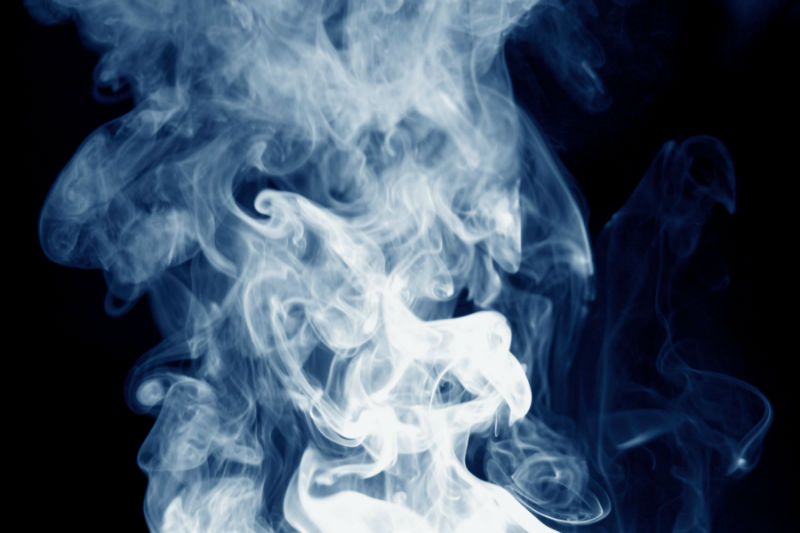
by Mike O'Mara | Jan 24, 2017 | Smoking Chimney
If your chimney is smoking, there are many reasons why this may be occurring. Having smoke back up into your home can be a really frustrating experience, especially when all you want to do is enjoy a cozy fire. If you have issues time and time again, try out some of these methods to ensure all of your smoke goes up the chimney like it is supposed to.
Open Your Damper
Your damper should be opened all the way before starting a fire. Oftentimes, homeowners forget this step, which means the smoke has no way of escaping out the chimney! As your fire burns, you can adjust it accordingly, so that you get the most efficient burn possible.
If the damper is stuck, a good cleaning may be in order. Which leads to another reason as to why your chimney may be smoking…
Check For Build-Up
As creosote and other debris accumulate in your fireplace, blockages will start to form. The smoke will enter your living room if there is not a clean pathway for smoke to escape. If you think a cleaning is necessary, call in a professional to check things over and remove any build-up throughout the chimney. A certified tech will have all of the appropriate tools and chemicals that are necessary for a thorough and complete inspection and sweep.
Inspect Your Fuel
Burning unseasoned wood will produce much smokier fires. You should purchase wood that has been dried for at least six months (but one to two years is ideal). Or, better yet, dry your own wood, so you know you are working with the best possible fuel. Unseasoned wood burns much less efficiently and uses up a lot of energy when burning through the excess moisture. This results in more smoke output.
Check Out Your Chimney Dimensions
Chimney height, flue size, and more can all affect how well your chimney functions. A certified pro will know exactly what dimensions your set up needs to be in order to run efficiently. Schedule an inspection today, so you will know whether or not your chimney is in need of some adjusting.
Adjust Your Windows
Sometimes, all it takes is opening a window or two to help the airflow adjust accordingly. A well-insulated home is good for many reasons, but it does mean your fireplace may struggle. Air needs to circulate through your home to keep a fire running, but if not enough air can work its way back in, your fire will start smoking up the house. Opening a couple windows will help get things flowing normally.
On the opposising side, your home may not be insulated enough! Too much air can also mess up your fireplace. If this is the case for you, ensure that all windows are tightly closed, especially those on the higher levels.
Call Us!
For more chimney help, call on the staff at Weststar Chimney Sweeps today!

by Mike O'Mara | Aug 31, 2015 | Chimney Maintenance, fire safety

Not sure what a damper is or what it does? Weststar Chimney Sweeps is here to help.
At Weststar Chimney Sweeps, we are often asked by our customers to explain damper locks and why they are necessary. These questions typically come from those who have just had a home inspected for real estate purposes and have been told by the home inspector that they need to install damper locks to be compliant with the California Uniform Building Code. We know exactly how to keep you under compliance with this code, and our Chimney Safety Institute of America (CSIA)-certified chimney technicians can install damper locks in your chimney system. We would like to tell you more about damper locks to inform you of this important and necessary safety component.
What exactly is a damper lock?
Also known as a damper clamp or a damper stop, a damper lock is a small C-clamp or steel beam clamp that serves to keep the damper in a fully open position.
Why do I need a damper lock?
According to the California Uniform Building Code, damper locks are required to be equipped on dampers for systems that vent any type of gas appliance. Whenever you burn a fire in your gas appliance, the damper must be locked open for safety reasons. This can prevent carbon monoxide from being forced back into your home. If the damper is closed, this poisonous gas has no way to exit out of the chimney. Without carbon monoxide detector alarms installed in your home, you and your family could easily become seriously ill from carbon monoxide poisoning as this toxic gas is odorless and tasteless.
Why are damper locks only required for gas appliances?
If you forget to open your damper when you are burning wood, the problem becomes obvious when the room quickly fills with smoke after lighting the fire. As we mentioned earlier, there are no obvious signs for not opening the damper during a gas-fueled fire. This is why the California Uniform Building Code has required that the damper be locked in a fully-open position. You will be protected from the dangers of carbon monoxide if you forget to open the damper or if your gas appliance is turned on accidentally.
How can I prevent heat loss from my home when the damper must be locked fully open?
To help keep the heated air from your gas fire inside your home, Weststar Chimney Sweeps can install glass doors in front of your fireplace. However, you should keep in mind that if you have a prefabricated or factory built fireplace, glass doors may not be an option for safety reasons.
Have more questions about damper locks? Contact us at Weststar Chimney Sweeps so that we can help you be compliant to this important state building code.


